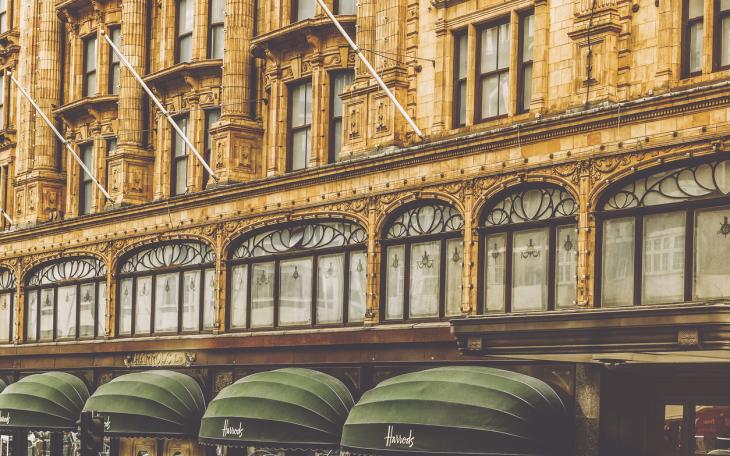Why luxury fashion brands are continuing to plough money into their physical stores

Despite the ubiquity of online shopping and its prominence within the retail industry, luxury brands are continuing to plough money into their physical stores – either through renovations or securing ultra-expensive leases in prime locations. Both Yves Saint Laurent (YSL) and Tiffany & Co. recently made headline news following investments into maintaining a physical presence in London and New York respectively, highlighting the continued value of experiential retail and the associated faith in the future of bricks and mortar for super prime fashion houses.
Recognising the value of an experiential environment for customers is one critical factor fuelling luxury businesses to invest so heavily into their physical stores. Not only does it offer brands the opportunity to showcase their products in a way that cannot be replicated online - through elaborate window displays and visual merchandising - but it also allows for a unique shopping experience which creates a sense of exclusivity. For example, originally built as a block of apartments, each room of the department store Harrods has been carefully designed, allowing it to cater for a unique shopping experience. Interestingly, Harrods’ Managing Director, Michael Ward, also stated that the secureness of the building meant that it was one of the few places their customers felt safe to walk around without their own security.
More recently, super prime retailers have been looking to capitalise on consumer desire for a wider shopping experience, positioning their stores as a ‘must-visit’ destination for shoppers. This has led to an expansion in offering from dining to wellness, again, showcased by Harrods. Here, the renowned department store expanded to offer high quality cuisine - with the likes of Tom Kerridge, Jason Atherton, Gordon Ramsay and American sushi chef Masa helping to promote the department store as a destination for food as well as luxury goods. Increasingly, we are also seeing a rise in immersive experiences, most recently showcased by Dior’s gingerbread exhibition whereby the store was transformed into a giant gingerbread house, providing a more interesting shopping venture for customers.
The location of a physical store also factors into the value that luxury brands place on having a physical presence. Prestigious locations draw in luxury retailers as they seek to position their brands amongst the right customers and competitors. This is perfectly exemplified by YSL’s recent UK record lease agreement of £13m per year for the six-storey property on Bond Street. Bond Street’s global reputation for housing prestigious fashion retailers since the 18th century, hosting a wealth of elegant designer stores and exclusive fashion brands, means brands will inevitably be placed in front of their target audience.
The history and legacy of buildings also holds significant value when it comes to brands acquiring or maintaining their stunning emporiums. The astonishing transformation of Tiffany & Co’s Fifth Avenue store in New York marks the restoration of the world’s best-known retail landmark to reflect its former glory. Similarly, Harrods, often considered the ‘Palace’ of Knightsbridge, holds a reputation both as a premier retailer and as an iconic west London landmark, symbolising centuries of London’s history and where customers want to spend their money.
The faith in bricks and mortar is therefore intrinsically linked to the landscape of luxury shopping. The customer experience and uniqueness of the venue – whether it’s the history of the building or its prime location – hold significant value to a brand’s reputation and positioning. As a result, the high levels of investment into refurbishments and expensive leases are quickly outweighed by the benefits of how super prime fashion houses are perceived by their target audience. As such, we can expect to see further investments and innovation in experiential retail from prestigious brands, as they strive to stay relevant in the ever-changing consumer landscape.








